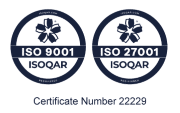3 Steps to Clean Air: Mobility Hubs, Enforcement and Public Transport
(This article first appeared in Parking Review, April 2022 | #359)
Clean Air Zones are a fundamental part of the air quality solution, but they will not succeed on their own. Solving the air quality crisis requires focus on tackling congestion as well as clean air enforcement. The UK government’s Clean Air Strategy of 2019 set out to improve air quality through the implementation of Clean Air Zone schemes. Though vital, such schemes will do little to address non-exhaust emissions such as that caused by tyre and break wear, which Emissions Analytics has reported can be 1,000 times worse than exhaust emissions.
While cars will be part of the mobility infrastructure for many years to come, the task before us is to reduce the number of vehicles travelling in urban environments – for which we cannot rely on enforcement alone. We must promote modal shift away from private cars towards other forms of transport by combining enforcement with additional, accessible options. We can do so with the development of ‘mobility hubs.’
Mobility Hubs: More than Park & Ride 2.0
On one level, mobility hubs can be seen as an extension of the existing park & ride concept: motorists approaching an urban environment can park their vehicle and access onward mobility options. The mobility hub could be fully integrated with a range of live information systems: road traffic feeds to indicate live congestion and journey times, and real-time air quality to highlight the ongoing issue and harm caused to residents and visitors.
But perhaps the most important integration is with public transport. By integrating the mobility hub with existing passenger information systems, motorists could be informed of the full range of onward journey options, including bus, rail, light rail, ride sharing and more.
In modern public transport journey planners this information can be completely personalised: motorists are guided safely and seamlessly all the way to their destination with a range of options including willingness to walk, accessibility requirements such as step-free locations, and preferred or blocked modes of transport.
Importantly from a health perspective, inclusion of ‘micromobility’ options – bikes, scooters and walking – within the journey planner would present a double benefit: not only promoting low emissions journeys, but also encouraging active travel.
Mobility hubs present an opportunity for councils to communicate directly with motorists
MaaS: Seamless Payments
If the description above sounds rather like a mobility as a service (MaaS) network, this is because that is exactly what it is. Interestingly, existing enforcement technology could also support the delivery of a payments system for a mobility hubs/MaaS solution.
Permit solutions can already manage flexible emissions-based permits. An expansion of this technology would enable visitors to a mobility hub to not only purchase a permit to park, complete with electric vehicle charging as required; they could also pay for all onward journeys through the same application, which would serve as a virtual ticket.
Such an approach has powerful potential to drive behavioural change, with variable rates for vehicle emissions and even vehicle sharing: there is no technological reason that we could not offer reduced onward journey rates for those who shared a vehicle to the mobility hub – which could be identified and policed through use of the permit/ticket in onward journeys.
At the Hub: Challenges and Opportunities
One challenge that must be considered is the allocation of electric vehicle charging points in the mobility hub. Availability of charging points is rarely a problem today, but as the number of electric vehicles increases this will become more of an issue.
Mobility hubs will need to manage access and enforcement of this area, addressing issues such as vehicles using charging spots for longer than required, and policing non-electric vehicles taking up precious charging spaces.
Technology will provide solutions to these challenges, with enhanced ANPR (automatic number plate recognition) systems focussed on specific bays rather than entire car parks; and real-time monitoring tools to proactively direct civil enforcement officers to specific locations.
But more positively, mobility hubs also present an opportunity to rethink how we use parking spaces. For example, why have vehicles sitting idly for drivers to return, when on-site mechanics could use this time to undertake MOTs, servicing and vehicle maintenance?
Such an approach would, of course, eliminate journeys to and from garages; but would also free up time in increasingly busy lives, encourage use of other modes, and deliver a mental wellbeing benefit – something of which most of us are ever more conscious, given the challenges of the past two years.
Mobility hubs present an opportunity to rethink how we use parking spaces
Driving the Change
One of the hardest aspects of any change relates to converting people’s behaviour. We can put the technology in place, but it will be worthless if people don’t use it.
The implementation of mobility hubs will present an opportunity for councils to communicate directly with motorists, whose details will be stored within the permit/ticket system. This channel can be used to warn drivers of upcoming events and potential travel challenges, and proactively nudge them towards sustainable transport options.
However, the support infrastructure around mobility hubs will also be vital, because if people are to leave their cars outside our towns and cities, they must feel secure in the processes and be fully supported when something is confusing or does not go as expected.
We see an important role for call centres to support the technology. ‘Bot tech’ solutions will help to automate the resolution of common enquiries, but we will also need to be able to put a ‘human face’ on interactions where required.
Specialist call centres, or business processing outsourcing (BPO), will provide the essential support infrastructure that will transform mobility hubs from a daunting new approach into a way of travelling which is at once simple, accessible and natural.
Conclusion
When we first began talking to local authorities about enforcing Clean Air Zones, our message was a simple one: the industry already has technology to meet this requirement; let’s use it.
When thinking about mobility hubs, we believe a similar approach is required. Between enforcement and public transport there is a vast amount of proven, powerful technology which can reduce the number of private, polluting vehicles on the roads.
The next step is to connect these technologies so they work in harmony, changing behaviour and driving towards a common goal.
Mobility hubs represent a precious opportunity to promote technology integration, deliver a transformative effect on the way people move, and provide extra momentum to the clean air and MaaS agendas.
Company Registration Number: 02023383 ¦ Registered Office Address: Century House, 1 The Lakes, Northampton, NN4 7HD





